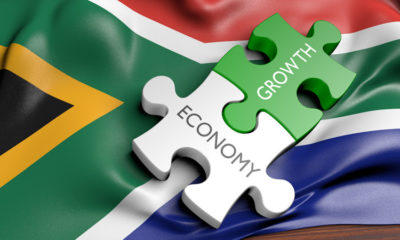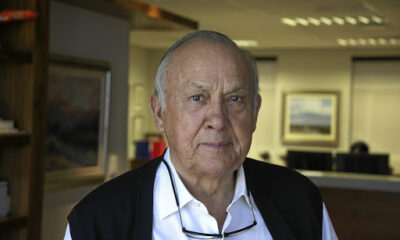- Gloom Gripping South African Economy Spilling Over Into Banks
Barclays Africa Group Ltd. just delivered further proof that South Africa’s economy won’t be climbing out of the doldrums anytime soon.
The Johannesburg-based lender kicked off the earnings reporting season for South Africa’s banks with a decline in total first-half income, the first interim contraction since Maria Ramos took over as chief executive officer in 2009. The stock dropped on Friday, leading declines on the six-member FTSE/JSE Africa Banks Index and extending its losses this year to 14 percent.
The strain of South Africa’s economic contraction also showed in the 10 percent decrease in earnings excluding one-time items at the bank’s main South African consumer unit in the six months through June as lending at its mortgage and credit card businesses shrank. Income from fees on transactions and commissions and deposits dropped 14 percent, while costs increased faster than revenue.
“We expect the economic environment to remain challenging,” Ramos said in an emailed statement. The company also sketched a bleak outlook for the rest of year across its businesses in 12 African countries, predicting “low- to middle-single digit loan growth,” a decline in its net-interest margin, slower revenue growth and higher costs.
South Africa slumped into a recession in the first quarter after all but two industries shrank amid continued political wrangling and policy uncertainty. Barclays Africa’s South African banking operations account for 74 percent of normalized earnings before one-time items.
The country’s foreign-currency debt was downgraded to junk in April after President Jacob Zuma fired his respected finance minister and replaced him with someone who has no financial experience. Unemployment is also at a 14-year high as the governing African National Congress prepares to pick a new party president at the end of the year.
“Key risks facing South Africa in the second half include heightened political and policy uncertainty in the run up to the ruling party’s December elective conference, the potential for the country’s sovereign credit rating to be downgraded further, and for weak business and consumer confidence to lead to a longer, more protracted recession,” Barclays Africa said.
Its Johannesburg-based peer, Nedbank Group Ltd., reports first-half earnings on Monday.
‘Slightly Negative’
“The main risk to our view on Nedbank and on South African banks in general remains the political and economic situation in South Africa,” Henry Hall, a banks analyst at HSBC Holdings Plc in Johannesburg, said in a note on Friday. The lender, controlled by London-based Old Mutual Plc, will report 2 percent growth in earnings per share before one-time items, Hall said.
A 25 basis-point reduction in interest rates last week will also be “slightly negative” for South African banks, Harry Botha, an analyst at Avior Capital Markets, said in a note. Barclays Africa hedges most of its short-term interest rate exposure so it’s probably in the best position followed by Standard Bank Group Ltd., he said.
A 27 percent improvement in impairments following credit losses from two large corporate clients the previous year and 19 percent growth in profit from its African businesses helped boost earnings. The lender reported a 7 percent increase in normalized EPS excluding one-time items to 9.18 rand, beating the 8.80 rand median estimate of four analysts.
“For the remainder of the year, Barclays Africa will place priority focus on its retail and business bank performance in South Africa and on driving opportunities in its businesses outside of South Africa,” the lender said.

 Naira3 weeks ago
Naira3 weeks ago
 News4 weeks ago
News4 weeks ago
 Naira4 weeks ago
Naira4 weeks ago
 Travel3 weeks ago
Travel3 weeks ago
 Naira3 weeks ago
Naira3 weeks ago
 Jobs3 weeks ago
Jobs3 weeks ago
 Naira3 weeks ago
Naira3 weeks ago
 Investment4 weeks ago
Investment4 weeks ago




























